#tongass national forest
Explore tagged Tumblr posts
Text
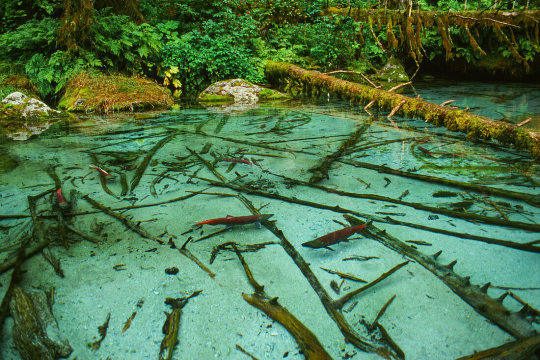
Tongass National Forest
#Tongass National Forest#alaska#photography#nature#plants#green#trees#water#landscape#blue#salmon#river#moss#forest#woods#rocks#fish
772 notes
·
View notes
Text
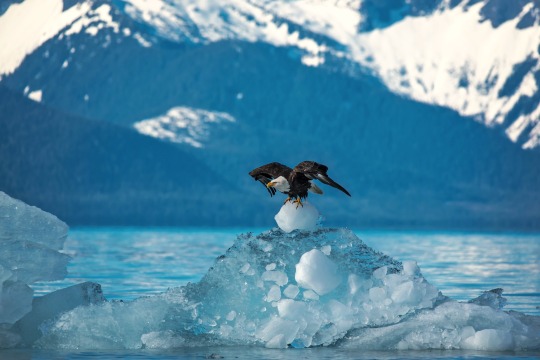
Bald eagle taking off from iceberg, Tongass National Forest, Alaska, 2017 - by Carey Case, American
119 notes
·
View notes
Text


be gay on the tops of mountains
#minolta srt 101#film photography#analog photography#nature#film#moody#pnw#alaska#hiking#backpacking#ilforhp5#black and white#b&w photography#lgbt art#t4t#t4t art#SE Alaska#tongass national forest
24 notes
·
View notes
Text




alaskan archipelago wolf wandering in tongass national forest - source
#wolf#canines#nature#wolf photography#animals#mammals#wolves#photography#wild wolf#alaska#mountains#arctic animals#snow#glacier#tongass national forest
8 notes
·
View notes
Text
I had these on in the background earlier today, had a couple Bald Eagles hanging out on one of the cams for a good long while and lots of bears in the other.
Explore Live Nature Cams hit another one out of the park
13 notes
·
View notes
Text

#personal#photography#nature#alaska#juneau#temperate rainforest#naturecore#nature photography#tongass national forest#mountain#watercore#island living#island#oceancore#sunshine#auke bay#Áak'w Ḵwáan territory#gastineau channel#fritz cove#sea punk#sunny#summer#ocean water#pacific northwest#southeast alaska#mine#seapunk
21 notes
·
View notes
Text


One more thing from Ezra himself (He/they say there's news about new pronouns coming).
Ezra says he's never been so cold in his life as when he was in the Arctic, and that, thanks to Civil Society, who run @thecapitolradar here on Tumblr, he probably won't have to go back.
He explained that, in 2020, Civil Society bought the drilling rights to the Tongass National Forest, the largest carbon sink in the Western Hemisphere.
What's CS doing with those drilling rights?
Nothing. They're doing nothing. So, no drilling, and the Tongass stays clean. Ezra advises that you hit up the folks at CS to find out about their efforts on alternative energy.
Thankful beyond words to Ezra Miller, whose active commitment to climate action inspires us every day.
We love you, Ezzie.
Zoe, Jana, and Patrick
#ezra miller#tongass national forest#carbon sink#climate action#the capitol radar#civil society#climate justice
2 notes
·
View notes
Text
Chop All The Trees Down!!! Profit Over Life!!!
The Republicans have come up with an absolutely brilliant plan to stop forest fires!!! It’s so simple really, I can’t believe nobody thought of it before! Just chop down all the trees! No trees, no forest fires … see how simple? Wh-what’s that you say? We need trees to produce oxygen for us to breathe? Oh … well … a minor detail, I’m sure. Perhaps ol’ Elon Musk can devise some sort of…
#Climate change#Donald Trump#forests are ecosystems#Heated#logging industry#Project 2025#Tongass National Forest#wildfires
0 notes
Text
Bald eagle
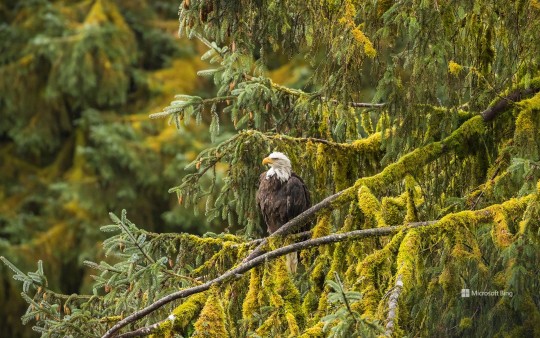
Bald eagles are a symbol of strength, determination and courage. This bird of prey native to North America, is named as such for its white-feathered head. It was once an endangered bird, but conservation efforts and the implementation of the Endangered Species Act helped these eagles multiply in number. Today's image is of the Tongass National Forest, Alaska, where you'll find the highest nesting density of bald eagles in the world. Eagles are picky when it comes to selecting a tree to nest on. They like trees that are tall enough to offer good visibility of their surroundings.
1 note
·
View note
Text
Joel Jackson, the president of the Organized Village of Kake, a tribal community, has lived within the Tongass National Forest in Alaska his entire life. His community relies on the land for hunting deer and fishing salmon that swim in streams kept cold by the old-growth forest.
But the 66-year-old worried about damage to that land - the largest national forest in the US - after former President Donald Trump rescinded a measure blocking logging and road-building on nine million acres of land in the Tongass in 2020.
"The forest is key to our survival as a people, to our way of life … for thousands of years," Mr Jackson said.
Last week marked a long-awaited victory for Mr Jackson and other tribes and environmental groups who petitioned the US Department of Agriculture (USDA) to reinstate the protections for the forest.
The agency announced last Wednesday it would once again ban logging and the construction of roads for cutting timber in over half of the Tongass.
#alaska#good news#give the land back#that will protect it better than a ban that can be reinsinced by the next president#but hey#good news is good news#tongassnationalforest#tongass#Organized Village of Kake#indigenous people#first nations
2K notes
·
View notes
Photo
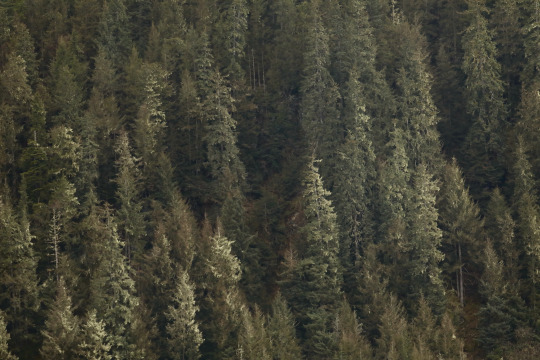
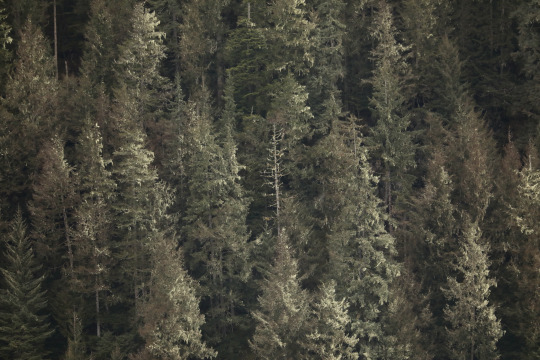


Tongass National Forest, Juneau, Alaska
376 notes
·
View notes
Note
I am dying with curiosity about the Human au you have in the works. Would you be willing to share a snippet?
Haha, sure! This bit's still a little rough, but:
-
Louis works his mouth, leaning sideways against the doorframe as Marta makes the bed and Lestat dances around her, trying to figure out whether to place the orchid on the ornate dresser or the antique bedside table, the dusty pink of its petals shuddering every time he twirls between the two, and Louis should leave it. He should, knows too well nothing good comes from his opinion on the topic of his mother-in-law, but still - -
He can’t help himself.
“I just don’t want you to be disappointed,” he offers carefully, and it’s instant. The way Lestat puts the pot down a little hard on the dresser. The stem of the orchid jolts with the gesture, making the delicate flowers bob, and Louis feels a tension settle between his shoulders when Lestat glances over at him, blue eyes clear and pink lips parted. His tongue darts out, flicking over the blunt edge of his teeth, and Louis knows what he’ll ask even before he asks it:
“Why would I be disappointed?”
The tone – deliberate and even in a way Lestat just ain’t – is enough to have Marta promptly tossing the duvet over the bed, smoothing it out with a speed she reserves for moments like this. A deft hand whenever she sees the pin has been pulled on the grenade of Lestat or Claudia’s - - moods, and Louis steps into the room as she steps out. He moves to sit on the edge of the bed, feeling the mattress dip beneath his weight as he holds his hands up, placating. He wets his lips, watching Lestat turn back just enough to fiddle with the orchid pot, tilting it until it’s flowers glow in the stream of filtered light from the bedroom window, a habit not so much nervous as it is a distraction, because Louis knows Lestat knows he’s right.
He takes him in for a moment, sees the defensiveness in his determinedly set shoulders and too-deep breaths that always forms when the conversation becomes about his mother. A vulnerability that comes with the fact that Louis knows this part of him that he would dress up for others, a truth hidden behind frills that Louis has found himself undressing every time she visits, because the simple reality is that they’ve been married too damned long for Lestat to hide the fact that Gabrielle is Gabrielle.
Still, like most things with Lestat, those frills are best stripped slowly rather than all at once.
“Last time, she didn’t stay as long as she said she was going to,” he says gently, which is an understatement, really. A supposed three-month stay whittled down to maybe that many weeks after she’d gone to the Kisatchie National Forest on her own, telling them she meant to camp for a few nights only to call from a payphone in Ozark a week later, informing then in no uncertain terms that she would be spending the rest of her US visit traveling with a woman she’d met on a trail they hadn’t even known she’d been on. She’d never gotten a cell, despite the fact that Lestat had bought her a dozen in as many years, and when Louis had asked how she was planning on paying for this trip, she’d alluded to hocking the most recent one already.
The whole episode had had Claudia in tears, and Lestat in bed for the better part of a fortnight until a postcard from Tongass National Forest had arrived. The thing had no return address, but was scribbled with intrepid explorations that Lestat had read to their daughter with the showmanship of the performer he was, and they’d spent the next month imagining the new adventures Gabrielle was having like she was Indiana Jones and not a (grand)mother shot through. A game Louis had endured for their sake (although not one he hadn’t complained about bitterly to both Daniel and Grace).
“Bah! You’d have it sound like she grew tired of us, she met a beautiful American and let the fragile wilds of this country seduce her,” Lestat says now, and Louis blinks up at him, pulled from the memory as his husband turns around on the spot, tossing out a flippant hand like the whole thing wasn’t the repeat of too-many visits before it, and okay, Louis thinks. That’s what this is going to be.
Okay.
#tagging this with#disaster wedding au#just because in my head it's in the same universe#even if it's a lot later haha#fic asks
12 notes
·
View notes
Text
Excerpt from this story from Grist:
After spending more than two years drafting a plan to manage and protect the nation’s old-growth forests as they endure the ravages of climate change, the Biden administration has abruptly abandoned the effort.
That decision by the U.S. Forest Service to shelve the National Old Growth Amendment ends, for now, any goal of creating a cohesive federal approach to managing the oldest trees on the 193 million acres of land it manages nationwide. Such steps will instead be taken at the local level, agency chief Randy Moore said.
“There is strong support for, and an expectation of us, to continue to conserve these forests based on the best available scientific information,” he wrote in a letter sent Tuesday to regional foresters and forest directors announcing the move. “There was also feedback that there are important place-based differences that we will need to understand in order to conserve old growth forests so they are resilient and can persist into the future, using key place-based best available scientific information based on ecological conditions on the ground.”
President Biden launched a wide-ranging effort to bolster climate resilience in the nation’s forests in an executive order he issued on Earth Day in April, 2022. In complying with the order, the Forest Service sought to bring consistency to the protection of mature and old-growth trees in the 154 forests, 20 grasslands, and other lands it manages. Such a change was warranted because the agency defines “old growth” differently in each region of the country depending on the characteristics of the local forest, but generally speaking they are at least 100 years old.
Much of the nation’s remaining ancient forests are found in places like Alaska, where some of the trees in the Tongass National Forest are more than 800 years old, and California. In the East, much old-growth is concentrated in the Blue Ridge Mountains of Virginia and North Carolina. All told, old-growth forests cover about 24 million acres of the land the Forest Service manages, while mature forests cover about 67 million.
The plan would have limited logging in old-growth forests with some exceptions allowed to reduce fire risk. The Forest Service spent months gathering public comment for the proposal, which the Associated Press said was to be finalized any day now. Many scientists and advocates worried the amendment would have codified loopholes that allow logging in old-growth forests. On the other side, Republican legislators, who according to the AP introduced legislation to block any rule, and timber industry representatives argued that logging is critical to many state economies and they deserved more input into, and control over, forest management. Such criticism contributed to the decision to scuttle the plan, the AP reported.
6 notes
·
View notes
Text
Alt National Park Service
People often ask, “What exactly are we resisting?” So, we decided to keep a detailed list. From 2017 to 2021, the Trump administration reversed over 100 environmental regulations, affecting climate policy, air, water, wildlife, and chemical safety. Additionally, more than a dozen other rollbacks were in progress but not finalized by the end of the term, prompting questions about the potential impact of another four years. You might wonder what another four years could look like. Here's a summary of Trumps last four years in office:
- Weakened fuel economy and greenhouse gas standards.
- Revoked California's stricter emissions standards.
- Withdrawn legal basis for limiting mercury from coal plants.
- Exited the Paris climate agreement.
- Altered Clean Air Act cost-benefit analysis methods.
- Canceled methane emissions reporting for oil and gas companies.
- Revised rules on methane emissions from drilling on public lands.
- Eliminated methane standards for oil and gas facilities.
- Withdrew rule limiting toxic emissions from industrial polluters.
- Eased pollution safeguards for new power plants.
- Changed refinery pollution monitoring rules.
- Reversed emissions reduction during power plant malfunctions.
- Weakened air pollution rules for national parks and wilderness areas.
- Loosened state air pollution plan oversight.
- Established minimum threshold for regulating greenhouse gases.
- Relaxed pollution regulations for waste coal plants.
- Repealed hydrofluorocarbon leak and venting rules.
- Ended use of social cost of carbon in rulemaking.
- Allowed increased ozone pollution from upwind states.
- Stopped including greenhouse gas emissions in environmental reviews.
- Revoked federal greenhouse gas reduction goal.
- Repealed tailpipe emissions tracking on federal highways.
- Lifted ban on higher ethanol gasoline blends in summer.
- Extended deadlines for methane emissions plans for landfills.
- Withdrew rule reducing pollutants at sewage plants.
- Dropped tighter pollution standards for offshore oil and gas.
- Amended emissions standards for ceramics manufacturers.
- Relaxed leak monitoring at oil and gas facilities.
- Cut two national monuments in Utah.
- Ended freeze on new coal leases on public lands.
- Permitted oil and gas development in Arctic Refuge.
- Opened land for drilling in National Petroleum Reserve, Alaska.
- Lifted ban on logging in Tongass National Forest.
- Approved Dakota Access pipeline near Sioux reservation.
- Rescinded water pollution rules for fracking.
- Withdrawn rig decommissioning cost proof requirement.
- Moved cross-border project permits to presidential office.
- Altered FERC's greenhouse gas considerations in pipelines.
- Revised ocean and coastal water policy.
- Loosened offshore drilling safety regulations post-Deepwater Horizon.
- Weakened National Environmental Policy Act.
- Revoked flood standards for federal projects.
- Eased federal infrastructure project environmental reviews.
- Ended financing for overseas coal plants.
- Revoked directive to minimize natural resource impacts.
- Revoked climate resilience order for Bering Sea.
- Reversed public land-use planning update.
- Withdrawn climate change consideration in national park management.
- Limited environmental study length and page count.
- Dropped Obama-era climate change and conservation policies.
- Eliminated planning system to minimize oil and gas harm on sensitive lands.
- Withdrawn policies for improving resources affected by federal projects.
- Revised Forest Service project review process.
- Ended natural gas project environmental impact reviews.
- Rolled back migratory bird protections.
- Reduced habitat for northern spotted owl.
- Altered Endangered Species Act application.
- Weakened habitat protections under the Endangered Species Act.
- Ended automatic protections for threatened species.
- Reduced environmental protections for California salmon and smelt.
- Removed gray wolf from endangered list.
- Overturned bans on lead ammo and fishing tackle on federal lands.
- Reversed ban on predator hunting in Alaskan refuges.
- Reversed rule against baiting grizzly bears for hunting.
- Amended fishing regulations.
- Removed commercial fishing restrictions in marine preserve.
- Proposed changes to endangered marine mammal injury limits.
- Loosened fishing restrictions for Atlantic Bluefin Tuna.
- Overturned migratory bird handicrafts ban.
- Reduced Clean Water Act protections for tributaries and wetlands.
- Revoked stream debris dumping rule for coal companies.
- Weakened toxic discharge limits for power plants.
- Extended lead pipe removal time in water systems.
- Eased Clean Water Act for federal project permits over state objections.
- Allowed unlined coal ash ponds to continue operating.
- Withdrawn groundwater protections for uranium mines.
- Rejected chlorpyrifos pesticide ban.
- Declined financial responsibility rules for spills and accidents.
- Opted against requiring mining industry pollution cleanup proof.
- Narrowed toxic chemical safety assessment scope.
- Reversed braking system upgrades for hazardous material trains.
- Allowed liquefied natural gas rail transport.
- Rolled back hazardous chemical site safety rules.
- Narrowed pesticide application buffer zones.
- Removed copper filter cake from hazardous waste list.
- Limited use of scientific studies in public health regulations.
- Reduced corporate settlement funding for environmental projects.
- Repealed light bulb energy-efficiency regulation.
- Weakened dishwasher efficiency standards.
- Loosened efficiency standards for showerheads and appliances.
- Altered energy efficiency standard-setting process.
- Blocked efficiency standards for furnaces and water heaters.
- Simplified appliance efficiency test exemption process.
- Limited environmentally focused investments in 401(k) plans.
- Changed policy on using sand from protected ecosystems.
- Halted contributions to the Green Climate Fund.
- Reversed national park plastic bottle sale restrictions.
5 notes
·
View notes
Text
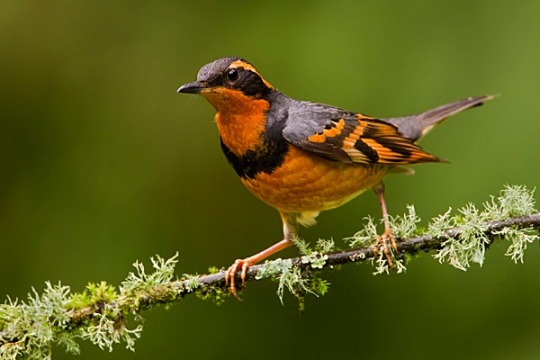
What the Roadless Rule Reinstatement Means for Birds
On January 25, the National Roadless Rule was officially restored to the Tongass National Forest in Southeast Alaska by the Biden administration.
There are a couple reasons why this is important.
The Tongass’s 17 million acres—the ancestral homeland of the Tlingit, Haida, and Tsimshian peoples ... is the country’s largest forest carbon sink, holding approximately 20% of all carbon stored in the United States National Forest system according to National Audubon Society’s 2021 Natural Climate Solutions Report. But it’s also home to hundreds of species of birds thanks to 11,000 miles of shoreline, old-growth and mature forest, and multiple wetland areas. Those species include Audubon priority birds like the Marbled Murrelet, Northern Goshawk, and Spruce Grouse. Others range from Common Ravens, American Crows, and Bald Eagles to Greater Yellowlegs, multiple gull species, and songbirds like the Red-breasted Sapsucker, Swainson’s Thrush, and Chestnut-backed Chickadee—all found on the Southeast Alaska Birding Trail. Zooming out of Southeast, the Tongass also “hosts about 70% of the species known to occur in Alaska, or about 40% of the bird species found in North America,” according to Audubon Alaska’s Ecological Atlas of Southeast Alaska. So, what does the Roadless Rule reinstatement mean for birds? It fully restores Roadless Rule protections for more than 9.3 million acres of the Tongass...
Read more: https://ak.audubon.org/news/what-roadless-rule-reinstatement-means-birds
#public lands#forests#alaska#conservation#ornithology#bird#birds#animals#nature#north america#science#environment
43 notes
·
View notes
Text
I’m so glad I finally discovered which wolf species I am a while ago, I wanted to share a few facts about it! I am an Alexander Archipelago Wolf.

The Alexander Archipelago Wolf, also known as the Islands Wolf, is a genetically distinct coastal subspecies of Grey Wolf found in the southeast Alaskan islands commonly known as the Alexander Archipelago. Their habitat is dense, undeveloped forest with an abundance of wildlife for food sources. Old-growth forest is also critical to providing proper wolf denning sites. Eighty percent of the wolves' habitat is within the boundaries of the Tongass National Forest.
Typically dark grey, black, or brown with short coarse fur, these wolves are known to primarily feed on Sitka black-tailed deer and salmon, but will also eat beaver, mountain goats, moose. They feed opportunistically on harbor seals, mustelids, small mammals, birds, and even marine invertebrates. They are around 2 feet tall, 3.5 feet in length, and usually weigh between 30-50 pounds, which is smaller than most wolves.
An official memorandum issued by the Alaska Department of Fish and Game estimated the population to number only 89 wolves in the fall of 2014, down from 221 the prior year — although the number could be as low as 50. Female wolves were said to have been particularly hard-hit; data in the report show that, as of fall 2014, only 7 to 32 females were left. That being said, Alexander Archipelago wolves are considered to be one of the rarest wolf species in the world.
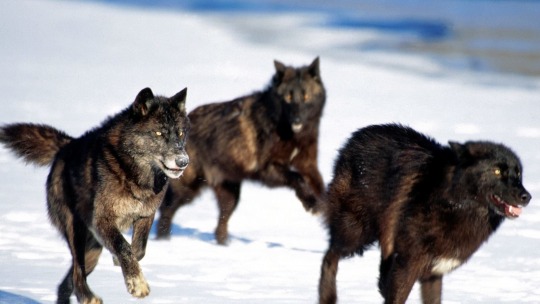
#staring#type2#other tags:#clinical lycanthropy#nonhuman#wolf#alexander archipelago wolf#island wolf#coastal wolf#photos#facts#nature#therian#wolf therian#wolfkin#otherkin#otherkith#kith#wolfkith#endel#kin#canine#caninekin#canine therian
82 notes
·
View notes